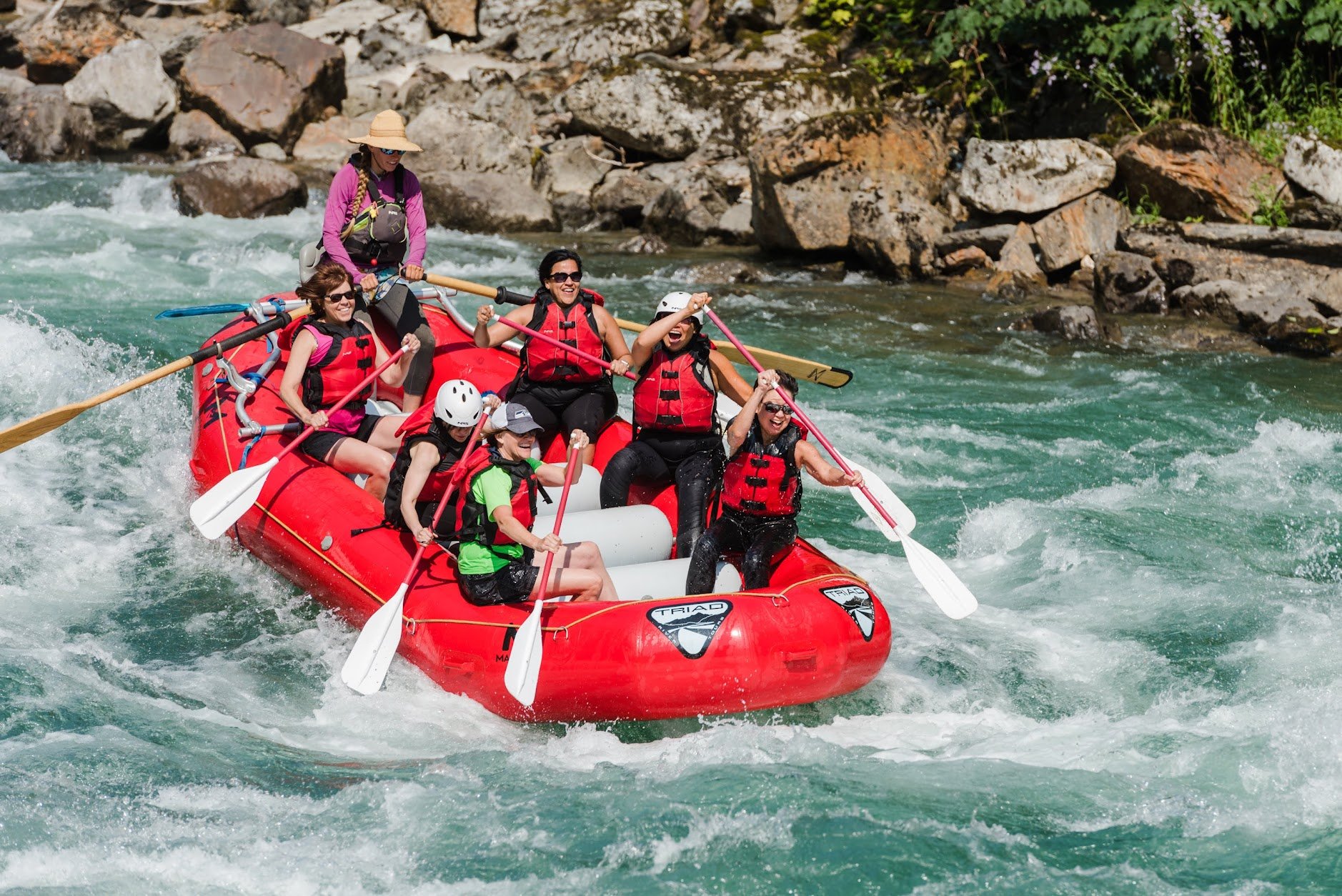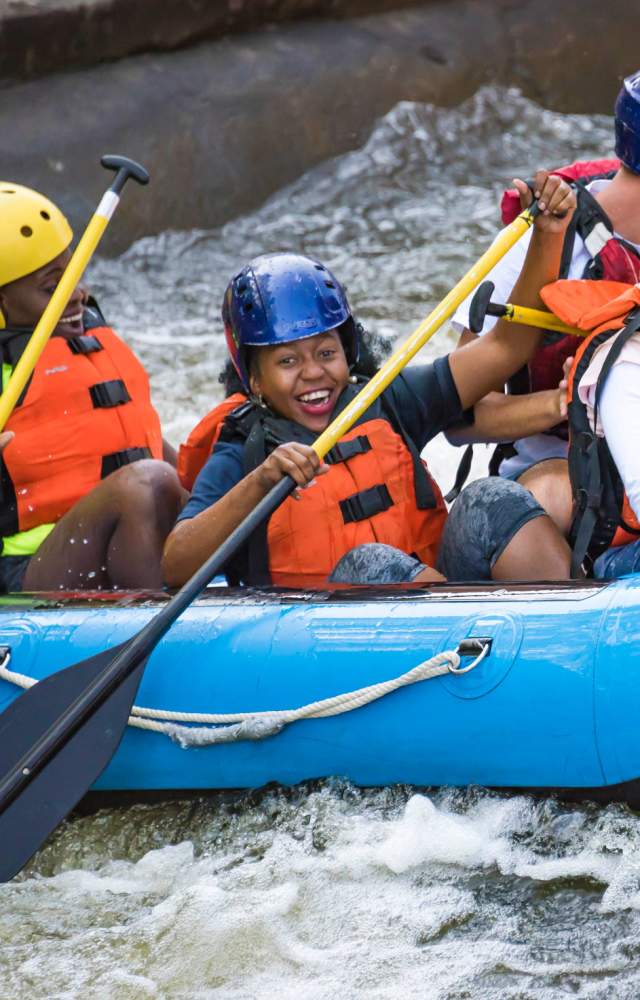Insider's Overview to White Water Rafting Colorado Rapids
Insider's Overview to White Water Rafting Colorado Rapids
Blog Article
The Ultimate Journey: Water Rafting Advice
Getting started on a water rafting adventure is an exhilarating experience that demands a blend of ability, prep work, and regard for nature's awesome forces (White Water Rafting Colorado). As the rush of the river moves you forward, browsing with weaves, the art of water rafting unveils itself as an examination of both physical prowess and mental acuity. From picking the ideal equipment to comprehending the subtleties of paddling methods, the journey down the river holds victories and challenges waiting to be conquered. Yet what genuinely sets apart an amateur from a skilled rafter exists not simply in the mastery of abilities, yet in the finesse with which one comes close to the unforeseeable dance with the currents.
Vital Equipment for Water Rafting
To make sure safety and security and comfort during water rafting trips, it is critical to equip oneself with the important gear customized to this daring task. The very first and most crucial piece of tools is a well-fitted personal flotation protection tool (PFD) or life jacket. This is non-negotiable for all rafters, as it supplies buoyancy in instance of accidental immersion in water. Furthermore, a sturdy helmet is vital to shield versus head injuries, especially in rough waters or if shaken off the boating.
In addition, proper shoes is essential for maintaining excellent hold and protecting the feet from sharp rocks or unsafe surfaces. Neoprene booties or water shoes are advised for this function. It is likewise suggested to wear quick-drying apparel, such as a wetsuit or rash guard, to regulate body temperature level and prevent hypothermia in cool water problems.
Last but not least, a trusted paddle is essential for maneuvering with the water effectively. It ought to be light-weight yet long lasting to withstand the roughness of rafting. By buying these important items of gear, rafters can enjoy their experience on the water with confidence and assurance.
Picking the Right Rafting Path
When planning a water rafting experience, selecting the appropriate rafting route is vital for a delightful and risk-free experience. Elements such as the level of trouble, water problems, and the length of the path should all be taken into consideration before starting your trip.
Most importantly, evaluate your team's ability level and experience. Different rafting paths are classified based upon difficulty degrees varying from Course I (simple) to Course VI (harmful and very challenging) It is very important to select a course that lines up with the capacities of all individuals to make sure everybody's security and pleasure.
Furthermore, take into account the water conditions of the course. Some courses might have calm waters appropriate for newbies, while others might have solid currents and difficult rapids that require advanced skills. Looking into the water degrees and potential dangers of the path in advance can help you make a notified decision.
Lastly, think about the size of the rafting course. Longer paths might need even more time and endurance, so select a path that fits within your team's timeframe and physical capacities. By meticulously picking the ideal rafting path, you can set on your own up for a exhilarating and memorable adventure on the water.
Safety Precautions on the Water
Thinking about the significance of selecting the best rafting course for a satisfying and risk-free experience, it is important to prioritize security precautions on the water to minimize possible dangers and ensure a successful adventure. Prior to starting a water rafting trip, ensure all individuals use effectively fitting personal flotation tools (PFDs) and helmets to guard versus crashes. It is critical to pay attention diligently to the guide's security rundown, which usually covers paddling techniques, what to do in case the boating flips, and just how to assist others if needed. Preserving interaction with the overview and fellow rafters is essential during the journey to work with activities and respond promptly to any signals or guidelines. In the occasion of a person dropping over the top, comply with the guide's instructions for swift and reliable rescue treatments. Finally, understand the water problems, such as barriers and rapids, and adapt your paddling methods accordingly to browse safely via the program. By adhering to these safety and security precautions, you can improve the total experience and decrease potential dangers while water rafting.
Grasping Paddling Techniques
Establishing efficiency in paddling techniques is important for navigating through varying water problems and making sure a successful water rafting experience. White Water Rafting Colorado. Proper paddling not only aids in steering the boating efficiently but additionally adds to the total sychronisation see page and teamwork needed for a enjoyable and secure trip
Among the basic paddling methods is the forward stroke. This stroke involves dipping the paddle blade completely into the water and pulling it back alongside the plethora, providing propulsion and steering. The backward stroke, on the various other hand, is essential for reversing or reducing down the plethora. By mastering the forward and backward strokes, rafters can successfully control the speed and direction of the boating.

Tips for Handling Rapids Like a Pro
To master discover here browsing challenging river problems, adept water rafters use their understood paddling techniques with accuracy and finesse when managing rapids like skilled professionals. When dealing with rapids, it is essential to keep a strong and worked with paddling rhythm. This rhythm aids the raft maintain its training course and stability amidst the unstable waters. In addition, it is vital to prepare for the movements of the raft and adapt swiftly to transforming conditions. Experienced rafters use their understanding of river dynamics to proactively change their paddling strategy, ensuring reliable maneuvering via rapids.

Verdict
Finally, water rafting calls for necessary gear, careful course option, safety preventative measures, grasping paddling strategies, and handling rapids with knowledge (White Water Rafting Colorado). By adhering to these techniques and suggestions, adventurers can guarantee a delightful and effective rafting experience on the water. Keep in mind to always focus on safety and security and be planned for the obstacles that included browsing via rapids. With technique and knowledge, anyone can become a knowledgeable water rafter.

Considering the relevance of picking the best rafting course for a pleasurable and safe experience, it is crucial to prioritize safety and security precautions on the water to reduce potential threats and ensure a successful experience. Inevitably, developing paddling methods is key to a successful and exhilarating water rafting journey.
In verdict, water rafting needs crucial gear, mindful route see here now selection, safety precautions, understanding paddling techniques, and managing rapids with competence.
Report this page